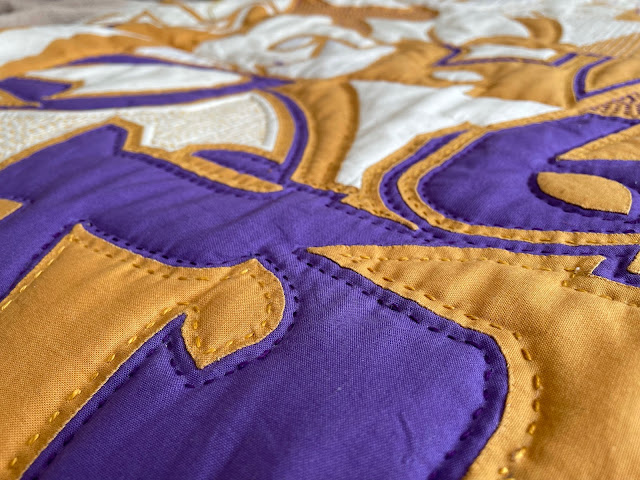Hand Quilter's Tips
I've finished the appliquéd top of my first 2022 project. Now I've moved on to the hand quilting stage.
For earlier hand quilted projects, I used a needle punched cotton batting which I felt was easy to work with since it is fairly thin. "Needle punched" means that the cotton has been treated with a stabilizer called "scrim" and then it is poked with needles. This makes it stable and dense, not layered or fluffy, and the batting is more durable. However, I found that sometimes little wisps of white appeared on the surface top where the needle pierced the fabric. This is called "bearding."
I wasn't sure why it was happening until a guest speaker from Hobbs Batting gave a talk to our guild. It turns out that, unless your needle is going through the batting in the same direction as the needle punch did in manufacturing, you are liable to catch little balls of the scrimmed batting when pulling the thread to the surface.
It was suggested that a second layer of another kind of batting be used to prevent this. I was skeptical, but decided to try it on this quilt. And I'm happy to report it works beautifully. First came the backing fabric, second was a layer of cotton batting, then a layer of unneedled wool batting, followed by my quilt top. The extra layer makes it a bit more cumbersome, but there are no signs of bearding, . . . yeah!!!
I've reached one of the edges now and that can be a problem when using a hoop. As you can see, it's not very stable; the fabric and batting can shift, or the edge can sag and stretch.
Extend the quilt to fit the hoop by basting an extra strip of fabric to the edge through all the layers. Then the quilt can be pulled taught in the hoop. I save and repurpose old bed linens for lots of things, (including knit blocking and ironing fragile fabrics) so, rather than damage good cotton, I grabbed some sheet scraps that work great and can be used over and over:






Comments
Post a Comment